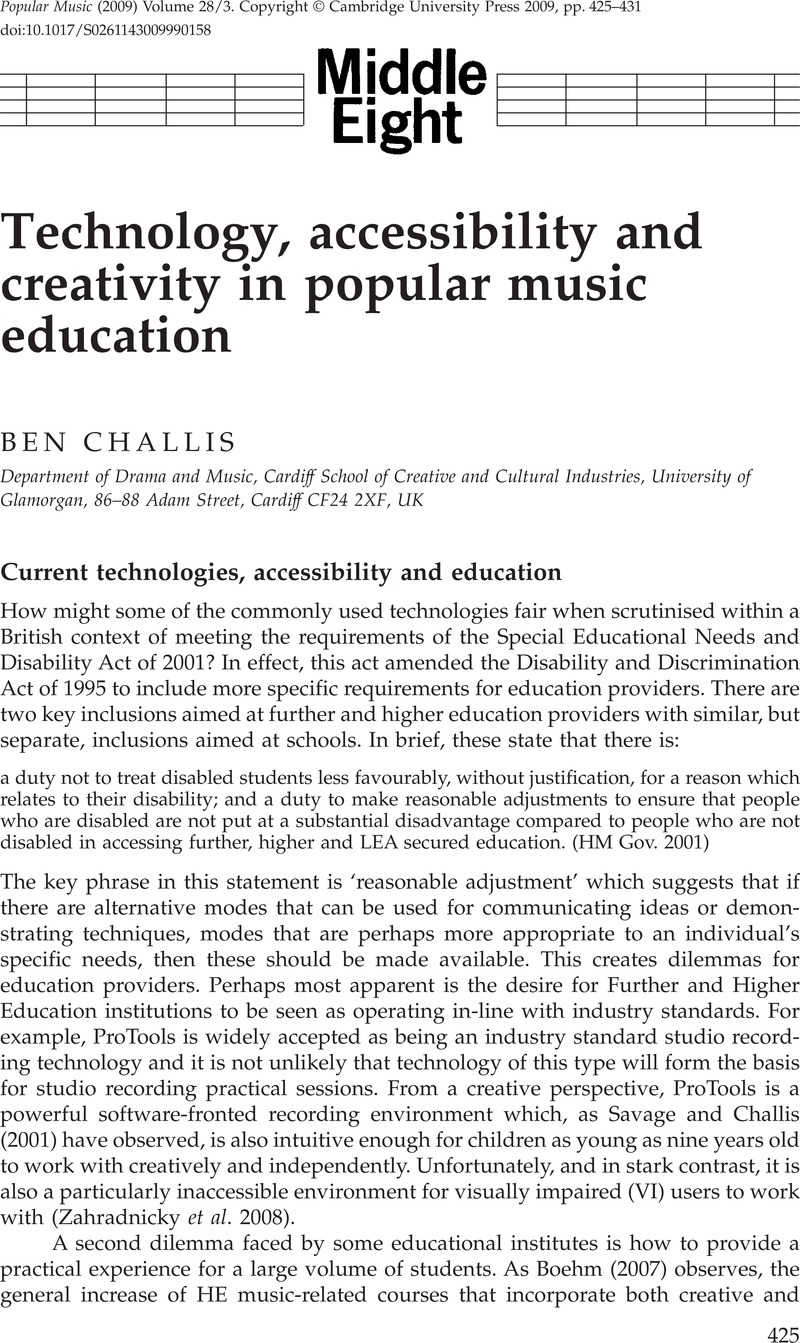Crossref Citations
This article has been cited by the following publications. This list is generated based on data provided by Crossref.
Ward, Asha
Davis, Tom
and
Bevan, Ann
2019.
Music Technology and Alternate Controllers for Clients with Complex Needs.
Music Therapy Perspectives,
Vol. 37,
Issue. 2,
p.
151.
Díaz Santamaría, Santiago
and
Moliner García, Odet
2020.
Redefiniendo la Educación Musical Inclusiva: Una revisión teórica.
Revista Electrónica Complutense de Investigación en Educación Musical - RECIEM,
Vol. 17,
Issue. ,
p.
21.





